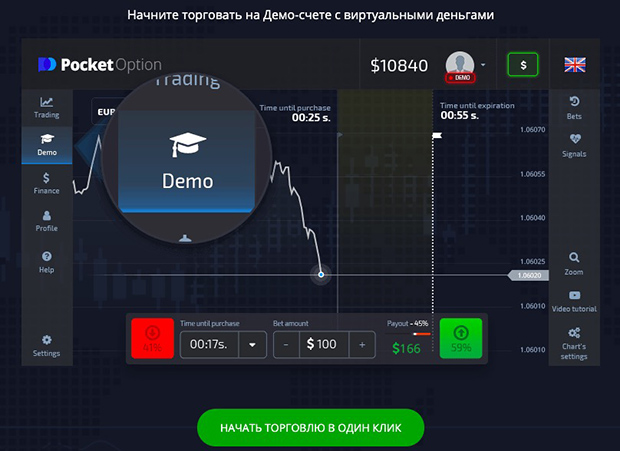
Trading with Ichimoku Kinko Hyo: A Comprehensive Guide
The world of trading presents numerous strategies and indicators that traders use to analyze the market and make informed decisions. One such sophisticated system is the Ichimoku Kinko Hyo, often simply referred to as Ichimoku. This Japanese indicator not only provides insights into support and resistance levels but also presents a holistic view of the trend, momentum, and predictive analysis of future price movements. In this guide, we will explore the intricacies of Trading with Ichimoku Kinko Hyo in Pocket Option торговля с Ichimoku Kinko Hyo Pocket Option, including its components, how to implement a trading strategy using it, and tips to enhance your trading effectiveness.
Understanding Ichimoku Kinko Hyo
Ichimoku Kinko Hyo translates to “one glance equilibrium chart,” a name that reflects its ability to provide comprehensive information about price action at a glance. The indicator consists of five main components:
- Tenkan-sen (Conversion Line): A mean value of the highest high and the lowest low over the last nine periods. It helps identify short-term trends.
- Kijun-sen (Base Line): Similar to the Tenkan-sen but calculated over the last 26 periods. It acts as an indicator of medium-term trends.
- Senko Span A (Leading Span A): This is the average of the Tenkan-sen and Kijun-sen plotted 26 periods into the future, forming part of the cloud.
- Senko Span B (Leading Span B): The average of the highest high and lowest low over the last 52 periods, also plotted 26 periods into the future.
- Chikou Span (Lagging Span): The current closing price plotted 26 periods into the past. It serves to confirm trends.
How Ichimoku Works
The main premise of Ichimoku is to find equilibrium in price movement and predict changes in trends. The two leading spans (A and B) create a “cloud” that dynamically indicates market trends. When Senko Span A is above Senko Span B, the market is considered bullish, and conversely, it is bearish when Senko Span A is below Senko Span B. The thickness of the cloud also adds an additional layer of analysis; thicker clouds indicate greater resistance or support levels.
Setting Up the Indicator
To set up the Ichimoku Kinko Hyo indicator on your trading platform, follow these simple steps:
- Open your trading terminal and select the chart for the asset you wish to analyze.
- Locate the indicators section and search for “Ichimoku Kinko Hyo.”
- Add the indicator to your chart. Default settings are typically set to 9, 26, and 52 for the different components.
- Adjust the colors and styles as desired for better visibility.
Developing a Trading Strategy with Ichimoku
A successful trading strategy using the Ichimoku Kinko Hyo typically involves a combination of its components. Here’s a simplified approach:
1. Trend Identification

Begin by determining the overall trend. Use the cloud: if the price is above the cloud, consider it an uptrend, and if below, a downtrend. The confirmation of a trend is strengthened if the price is trading above or below the Tenkan-sen and Kijun-sen.
2. Entry Signals
Look for crossovers between the Tenkan-sen and Kijun-sen. An upward crossover may indicate a potential buy signal, while a downward crossover may suggest selling.
3. Confirmation with Chikou Span
Use the Chikou Span to confirm your entry. Ensure it is above the price for buy signals and below for sell signals.
4. Setting Stop Loss and Take Profit
Place your stop loss just below the Kijun-sen for buys and above it for sells. Profit targets can be determined using previous high/lows or trailing the stops as the market moves in your favor.
Tips for Successful Trading
To maximize your potential with Ichimoku Kinko Hyo, consider the following tips:
- Combine with Other Indicators: While Ichimoku is powerful on its own, using additional indicators (like RSI or MACD) can enhance confirmation.
- Practice Risk Management: Determine your risk-reward ratio before entering trades to protect your capital.
- Review Historical Data: Backtesting your strategy on historical data can provide insights and increase confidence in your approach.
- Stay Updated on Market News: External factors can significantly affect the market, so always keep an eye on economic news and events.
Conclusion
Trading with Ichimoku Kinko Hyo can provide traders with a robust framework for analyzing market conditions and making informed decisions. While mastering this method may take time and practice, the insights gained through its comprehensive view of price action can significantly enhance your trading effectiveness. Always remember to combine your findings from the Ichimoku indicator with sound risk management and market knowledge for the best chances of success in your trading endeavors.

